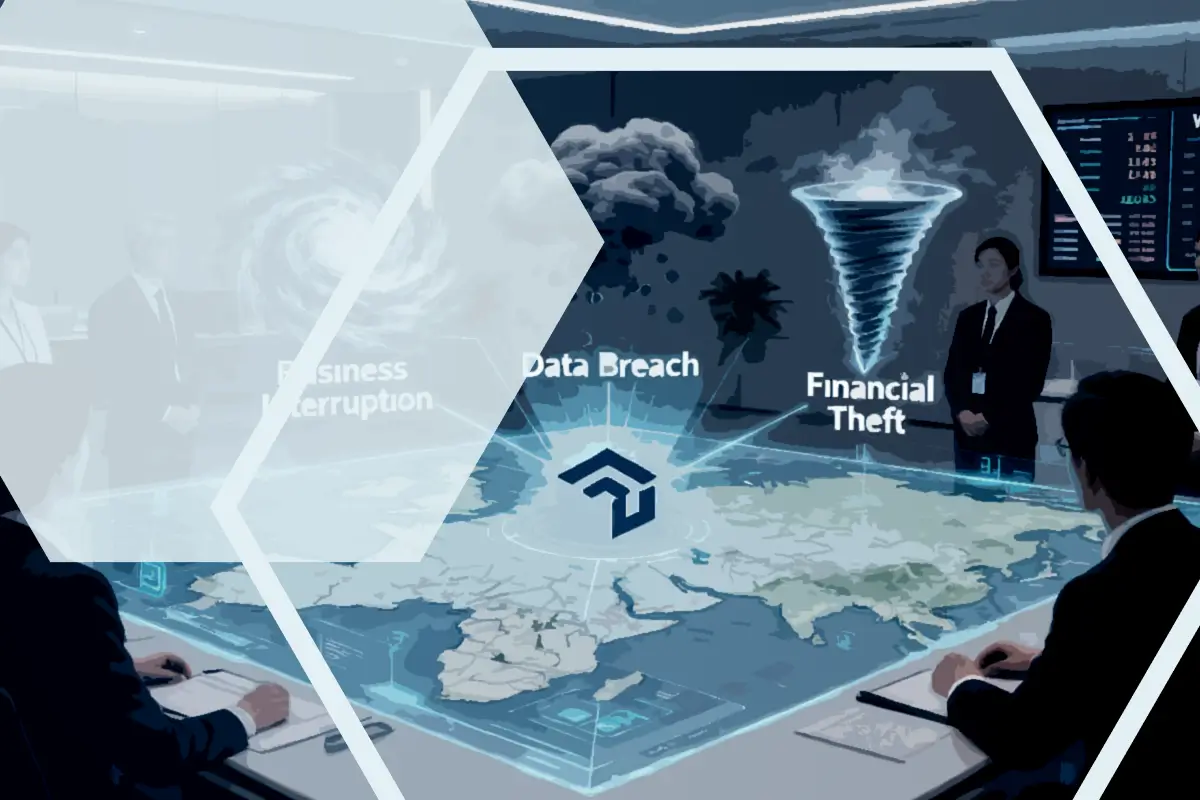Was Ihr Vorstand tatsächlich wissen möchte
Vorstände fragen selten nach Ransomware-Payloads oder Bedrohungsakteuren. Sie stellen geschäftliche Fragen. Dieselben Fragen, die sie auch zu anderen strategischen Risiken stellen:
- Was würde uns ein schwerwiegender Vorfall kosten?
- Sind wir finanziell darauf vorbereitet?
- Wo sind wir am stärksten gefährdet?
- Wie schneidet unsere Cybersicherheit im Vergleich zu anderen Unternehmen ab?
- Ist unser aktuelles Budget für Cybersicherheit gerechtfertigt?
Wenn Ihr Bericht diese Fragen nicht direkt beantwortet, wird er keine Beachtung finden – unabhängig davon, wie viele Kennzahlen er enthält.
Laut PwC's 2025 Digital Trust Insights geben 88 % der Führungskräfte an, dass die Quantifizierung von Cyberrisiken für die Priorisierung von Investitionen unerlässlich ist. Dennoch messen nur 15 % die finanziellen Auswirkungen auf aussagekräftige Weise.
Wir haben den Wandel beobachtet, als CISOs ihre Berichterstattung an die Denkweise der Vorstände angepasst haben. Dann wurde Cybersicherheit Teil der Unternehmensagenda.
Inhalt des vorstandsfertigen Berichts
So sollte ein Cyber-Risikobericht für Führungskräfte tatsächlich aussehen. Nicht noch ein weiteres Dashboard für Techniker, sondern ein Entscheidungsinstrument für den Vorstand.
Die vorlagenfertigen Berichte von Squalify umfassen:






Warum der Vorstand jetzt zuhört
Das sollten Cybersicherheits-Dashboards für Führungskräfte bieten: Klarheit, Kontext und Glaubwürdigkeit. Hier erfahren Sie, warum dieses Dashboard funktioniert.
- Es spricht die Sprache der Finanzwelt: Value at Risk, Worst-Case-Verlust und erwarteter Jahresverlust sind Führungskräften bereits vertraut. Vorstände nutzen diese Kennzahlen, um Kredit-, Betriebs- und Marktrisiken zu bewerten. Cyber gehört in dieselbe Kategorie.
- Es konzentriert sich auf finanzielle Ergebnisse, nicht auf technische Inputs: Vorstände wollen nichts über allgemeine Schwachstellen und Risiken (CVEs) hören. Sie wollen die Auswirkungen auf das Geschäft verstehen: Ausfallzeiten, Umsatzverluste, Bußgelder, Reputationsschäden.
- Es unterstützt Investitionsentscheidungen: Anhand eines modellierten ROI können CISOs den Wert vorgeschlagener Programme aufzeigen, bevor Ausgaben genehmigt werden. Das macht Budgetgespräche schneller und wesentlich effektiver.
- Es verfolgt Veränderungen im Laufe der Zeit: Vergleiche mit dem Vorjahr zeigen, wo Risiken steigen, wo Kontrollen verbessert werden und was beides beeinflusst. Der Vorstand erhält eine klare Darstellung, auf deren Grundlage er handeln kann.
- Es passt zum Format: Eine Seite. Klare Grafiken. Priorisierte Erkenntnisse. Anschauliche Einblicke erklären die Auswirkungen auf das Geschäft, ohne dass eine Übersetzung erforderlich ist.
Fazit: Was sich nicht in Geschäftskennzahlen ausdrücken lässt, ist irrelevant
Sie können ein Dutzend Kennzahlen für Cyberrisiken auflisten. Aber wenn diese nicht neben Bruttogewinn, Betriebsgewinn oder Auswirkungen auf die Geschäftskontinuität stehen, werden sie vom Vorstand nicht beachtet.
Führungskräfte ignorieren Cybersicherheit nicht. Sie ignorieren Berichte, die keinen Bezug zur finanziellen Realität haben.
Dieser Bericht ändert das. Er behandelt Cybersicherheit als Teil des Unternehmensrisikos und nicht als IT-Hygiene. Er gibt CISOs die Möglichkeit, mit derselben Klarheit und Glaubwürdigkeit zu berichten wie andere Risikoverantwortliche.
Sie brauchen nur eine Seite, um Ihrem Vorstand genau zu sagen, worauf es ankommt.









